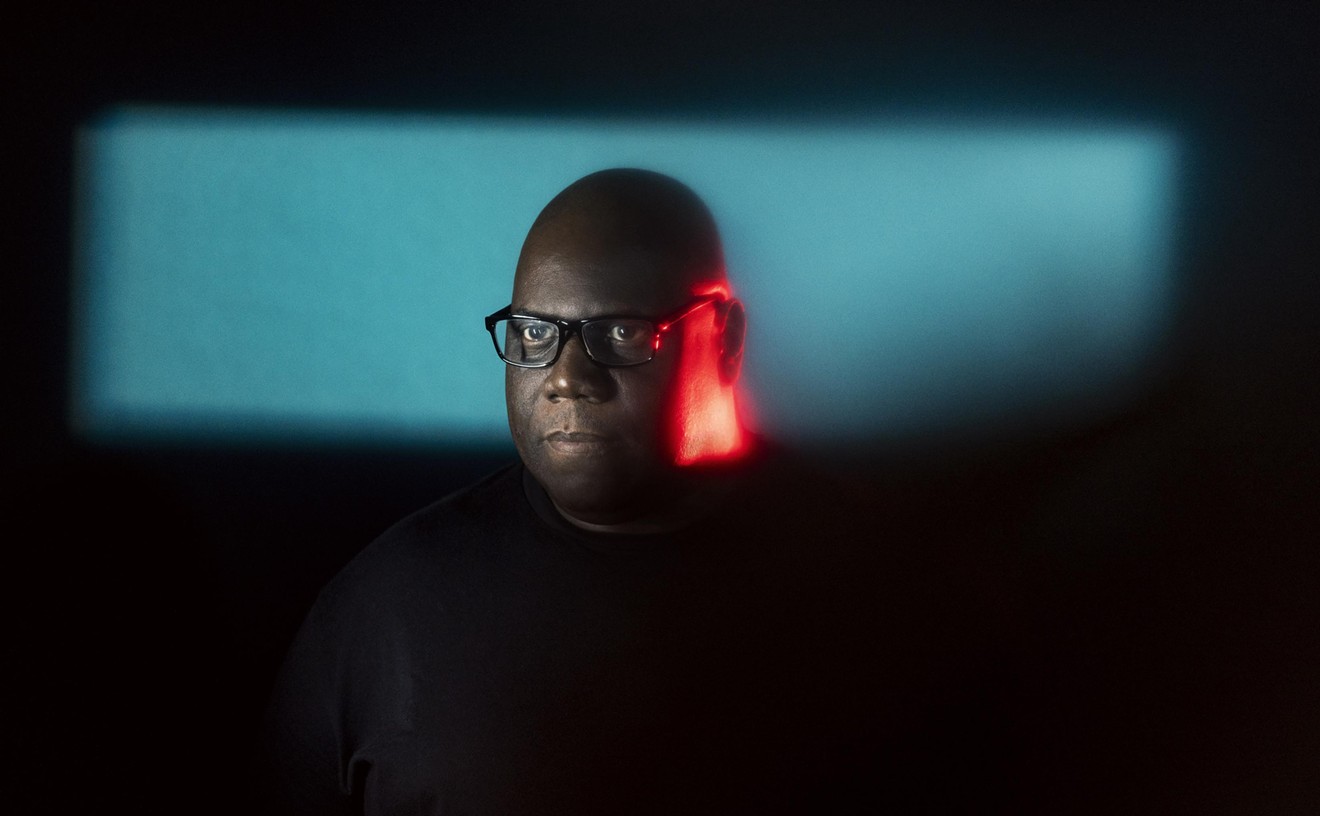black & white
(Black Top)
Like many other artists, James Harman makes the most of little, everyday discoveries. Accordingly black & white, his latest release, highlights the Alabama harmonica player's offbeat songwriting: The rockin' "Lock Doctor," which features Iko-Iko guitarist Larry Williams, was inspired by the slogan plastered on the side of a locksmith's van; the Stones-y fist-pumper "Hollywood Girls" was prompted by late-night phone-sex TV ads; and Harman fixed his warped eye on the knob of his AC unit for the "high cool" refrain on the way cool "Cold Tile Floor."
Harman sidesteps the novelty-song trap by supporting his work with gritty harp blowing and a relaxed vocal style that's at home with both Southern blues and uptown R&B. His trio walks the same hard edge, laying down a variety of grooves and riffs that range from the slow-burning "Four Questions" to the hard-stomping "Everybody's Rockin' (at the Zoo Bar)." Robby "Sugar Boy" Eason's guitar work is just as dirty as Harman's harp style, mixing Keith Richards and Elmore James on "Cut to the Chase," and upping the noise ante tenfold on the automotive love letter "Torqueflite 727."
For the most part black & white is a no-frills affair, with the occasional electric piano, Hammond C-3 organ, and some interesting percussion thrown in for texture. Harman even tries his hand -- not too shabbily -- at beat poetry with a hilariously recited piece called "The Twins." Rather than trying to dazzle, Harman deploys a laconic, unhurried harp voice not unlike that of Sonny Boy Williamson (Rice Miller), drenched in a deep-blues feel that's equal parts swampy menace and shack-shaking jive. His is a refreshing approach that pays heed to history but never sounds derivative. And that is indeed a rare commodity in modern blues.
By Bob Weinberg
Cesar Pedroso
Lo Mejor de Cesar Pedroso
(Qbadisc)
Pianist and composer Cesar Pedroso (a.k.a. Pupy) founded the immensely popular Cuban band Los Van Van with bassist Juan Formell in 1969, with the idea of creating a modern Latin dance orchestra. The group sets its spicy -- at times subversive -- lyrics to a contemporary blend of Cuban son, guaracha, and other musical styles they call songo. To American ears it probably sounds like salsa, but there's an organic quality and instrumental virtuosity in Pedroso's music that is all too absent in many tropical dance recordings produced here.
Lo Mejor de Cesar Pedroso (The Best of Cesar Pedroso) is a tribute to the innovator's legacy; its ten cuts -- all written by Pedroso -- were past hits for Los Van Van. Recorded in Cuba and remastered by Qbadisc in New York City, the songs are performed by the pianist and an eclectic cast of Cuban singers and players, both young and old. Pedroso is joined by some Los Van Van members and a lineup of outstanding musicians on tres, brass, bass, and percussion, with an emphasis on Afro-Cuban drums and gourds.
The vocalists bring to the album a variety of Cuban styles -- folky nueva trova, son, and filin ballads -- and add muscle to Pedroso's basic dance-music compositions. Rolo Martinez, a Fifties bolero singer, contributes some classy, romantic crooning on "El Buena Gente" ("Good People"). Rojitas, a young singer from Adalberto Alvarez's group Su Son, mixes the smoothness of the soneros of old with a snappy contemporary pop sensibility (he even sings some lyrics in English) on the catchy "Seis Semanas" ("Six Weeks"). Issac Delgado, currently one of Cuba's most popular singers, lends a more predictable salsa flavor to two songs. Deep-voiced Omara Portuondo, a legendary vocalist from the Fifties, does a lusty version of Los Van Van's "Disco Azucar" ("Sugar Disco"), arguably the CD's standout number. But there isn't a weak track here.
By Judy Cantor
George Huntley
Brain Junk
(TVT)
I recently became aware of the term "twangcore," which is being used to describe music that blends country and hardcore. I was, I must admit, greatly relieved to acquaint myself with this word, because if there's one thing in dangerously short supply in the pop arena it's more labels for new permutations of not-very-new-sounding music.
After listening to the solo debut by Connells guitarist George Huntley, I was tempted to coin my own new genre label: "twangsnore." This would be rock that borrows from the country idiom but without sufficient panache to keep the listener awake. On further consideration, I think this is a bit harsh. Brain Junk is not all that bad. The finest songs here -- "Honestly," "Tammy," and "Feather" -- boast the same sort of mournful hooks that distinguish Huntley's work with the Connells. Also, varied use of Hammond B-3 organ, harmonica, slide guitar, and mandolin lends his compositions a pleasing country feel, without sinking to that genre's predictable arrangements. And although Huntley's crooning is not likely to melt any hearts, it's agreeably pained.
What the disc lacks is the bristling energy and sense of anguish that the Connells mustered on albums such as 1993's Ring. Huntley could fairly argue that he's aiming for a different sound with this project A a more subdued feel, perhaps. In toning down, however, his music now straddles that dangerous line between the understated and the plain uninteresting.
By Steven Almond
Valdes/Sim centsn Bolivar Symphony Orchestra
Caramelos Latinos
(Dorian)
Though the songs included in this collection of "Latin Lollipops" (as the title loosely translates) are virtually unknown in the U.S., each is as important to Latin American "pops" orchestras as Leroy Anderson's "The Syncopated Clock" is to the Boston Pops. These colorful light classics travel well, they carry no pretensions, and they work more magic per musical square inch than all the Chant CDs put together. Six composers are represented -- Camargo Gu…rnieri, Ginastera, Revueltas, Carre*o, Plaza, and Moncayo -- and the characters they portray in music include a wandering tadpole and a country bumpkin on his first visit to a big-city opera house (shades of Spike Jones's "Pal-Yat-Chee").
Dorian Recordings is committed to the music of Latin American composers. A 1994 release titled Tango! opened with Astor Piazzolla's Suite Punta del Este, music you will recognize if you've seen the new film 12 Monkeys (not that Universal gave Piazzolla proper credit for it, mind you). Venezuela's Sim centsn Bolivar Symphony Orchestra was conducted by Eduardo Mata on earlier Dorian discs; here, Mata (who was killed in a plane crash last year) is ably replaced by up-and-coming young conductor Maximiano Valdes. Dorian's fidelity is unbelievably lifelike, so play this one loud.
By Raymond Tuttle
Anders Osborne
Which Way to Here
(Okeh/550)
From the Louisiana bayou rises Anders Osborne, a scraggly Viking with a slide guitar, a soul-tinged voice, and a bagful of hooks. At times his brand of boogie harks back to early Allman Brothers, Little Feat, and even Jackson Browne. Tunes such as "Favorite Son" sound mighty familiar, yet sweep you along before you can ponder where you might have heard them before. Behind Osborne's achy-breaky tones, Theresa Andersson's electric violin and gospel-like backing vocals add spice to his surprising and tasty musical gumbo. Osborne himself fuels the fire with everything from mandolin and dobro to mouth harp, kalimba, Hammond B-3, and a Native American drum.
Like G. Love and Special Sauce singer-songwriter Garrett Dutton III, (another youngster on the recently reactivated Okeh label), Osborne flirts with the blues on just about every cut from Which Way to Here, his debut album. But where Love's hip-hop blues is a mere gimmick, Osborne uses the blues as a stepping stone for his genre-crossing songwriting. He even dabbles in country on "Limestone Bay," a lilting waltz that weeps like a classic honky-tonk elegy. Another quiet pleasure is "Don't Leave Me," with Osborne's voice and acoustic guitar tastefully underlined by a haunting violin that seems to stream in from Bob Dylan's Desire. Unfortunately Osborne's lyrics sometimes slip to the level of high school poetry. In "Blame It on a Few," he conjures a cast of romantic down-and-outers, including a troubadour who'll "sing about women and wine so real you can smell that perfume." Ugh.
Although there are some hot muffins here, there are also some half-baked -- or just half-assed -- ideas. "Nothin' On" kicks off with an irresistible New Orleans second-line beat, but bogs down into swampland long before its seven minutes are up. Still, as long as he skirts that kind of quicksand, Osborne's off to an auspicious start.
By Wif Stenger










